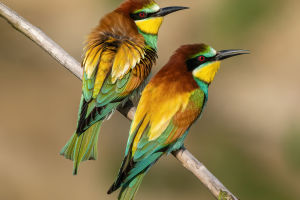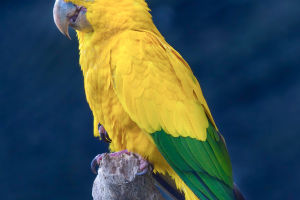Hummingbirds, these diminutive aerial marvels, are often celebrated as jewels among birds.
They are admired for their stunning plumage, graceful flight, and unique and enigmatic lifestyle.
Role in Nature
As some of the smallest birds globally, hummingbirds play pivotal roles in ecosystems. They draw significant attention due to their distinctive physiological traits and behavioral patterns, which are focal points in biological research.
Diverse and Captivating Appearance
Hummingbirds exhibit a diverse and captivating array of appearances. Despite their small stature—typically measuring only a few centimeters long—they boast resplendent plumage.
Their feathers dazzle with iridescent hues under sunlight, owing to unique structural properties. These structures not only facilitate effortless hovering but also enable rapid flight.
This remarkable aerial agility stems from hummingbirds' specialized bone structure and muscular systems, allowing them to dart through dense vegetation at speeds of up to 60 miles per hour, adeptly pursuing sustenance and locating habitats.
Ecological Significance
Beyond their remarkable aesthetics and flight capabilities, hummingbirds hold considerable ecological significance. They inhabit diverse habitats across the Americas, including tropical and subtropical forests, grasslands, and gardens.
Nectar and insects constitute their primary food sources. Their elongated beaks and specialized tongue structures facilitate efficient nectar extraction, making them pivotal in plant pollination. In doing so, hummingbirds not only facilitate the reproduction of flowering plants but also bolster the stability of numerous ecosystems.
Intriguing Life Habits
Hummingbirds are replete with fascinating behavioral anecdotes. Their flight maneuvers display astounding precision, while their social behaviors unveil complexity.
Some hummingbird colonies adopt various social structures, with some forming small clusters during breeding seasons and others maintaining more solitary lifestyles.
Their reproductive rituals are equally captivating; males often court females through elaborate displays of plumage and dances, showcasing unique courtship strategies and visually stunning performances.
Challenges to Survival
Despite their resilience, hummingbirds confront formidable survival challenges. Habitat loss, exacerbated by climate change and human activities such as deforestation and urbanization, poses grave threats to their populations.
These factors have led to substantial habitat fragmentation and depletion of food sources, precipitating sharp declines in their numbers.
Safeguarding hummingbirds and their habitats has thus emerged as a critical imperative for biodiversity conservation, necessitating concerted efforts from governments, scientists, and environmental organizations worldwide.
In summary, hummingbirds embody not only natural marvels but also pivotal subjects of biological and ecological inquiry. Their diminutive stature belies their profound environmental roles, serving as symbolic testaments to resilience and underscoring the imperative of protecting Earth's biodiversity.
A deeper understanding of hummingbirds' lives and ecologies not only enriches our appreciation of natural wonders but also galvanizes efforts to preserve Earth's rich tapestry of life.


